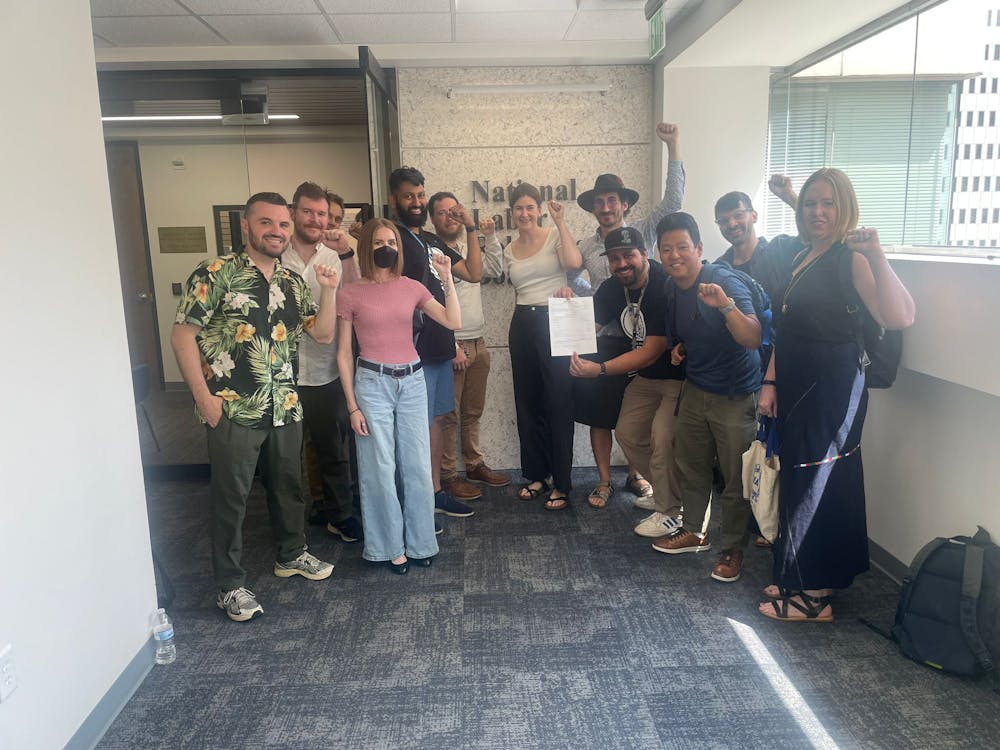Within the community of animated film creators, few can claim the level skill and success of Hayao Miyazaki. Considered to be a master of his craft, Japanese film director Miyazaki has earned renown for creating anime (read: Japanese animation) classics of worldwide acclaim, such as Spirited Away and Howl’s Moving Castle. Among his film’s accolades are his consistently good storytelling techniques, compelling characters and top notch animation, typically handled by the famed Studio Ghibli.
So, once I received word that the Hopkins Film Society would be airing one of Miyazaki classic works, Princess Mononoke, I decided to present my thoughts on the quality of this lauded legend.
Princess Mononoke is set in the Muromachi period of Japanese history, or roughly the period of the 14th to 16th centuries. Ashitaka (voiced by Yōji Matsuda (English dub: Billy Crudup)), the prince of a reclusive, hidden village.
One day a rampaging demon attacks his village, and while Ashtaka is able to subdue the beast, it inflicts a lethal curse on his arm; it was once a Boar God, which had been shot, corrupted and driven to insanity by humans. Departing his village, Ashitaka uses the little time he has left to live to attempt to track down the source of the corruptive bullet, as well as a cure for his now demonically-powerful arm. He soon finds himself roped into a conflict between the people of a newly-formed industrial town led by the ambitious Lady Eboshi (Yūko Tanaka (Minnie Driver) and the animal spirit gods of the nearby forest, including boars, wolves and a mysterious girl named San (Yuriko Ishida (Claire Danes)), who lives with the wolf guardians. As Ashitaka’s condition worsens, so too does the war between the natural and the industrial, culminating in a conflict with the potential to obliterate both sides.
True to form, Miyazaki’s storytelling techniques are executed nearly flawlessly. The moral spectrum presented in the plot is extremely multifaceted, dealing in shades of gray where it would have been so simple to create a very black and white conflict. Eboshi, San, Ashitaka and the nature gods all have very specific, very personal motivations, which make it difficult to portray any of them as objectively right or wrong. As such, the conflict in the film becomes all the more engaging, as it becomes very difficult to tell who specifically you want to win the day.
However, despite its intricacies, the film does have an issue with being insultingly basic in places. With the exceptions of San and Lady Eboshi, for instance, almost every character is portrayed almost insultingly one-dimensionally. For the most part, this is forgivable, as the characters in question have very small roles; Eboshi’s bodyguard, for instance, exists only to be the easily-riled-up-but-easily-defeated jerk, but he also only has a few lines of dialogue. Other characters, however, such as Ashitaka, have little reason to be as basic as they are.
Throughout the entire film, the protagonist only displays very basic motivations and little to no growth. He enters the conflict disagreeing with every side, makes little effort to empathize with any side, never questions his convictions and ends the film exactly the same person he started out as. While one could argue that he is merely steadfast in his convictions, the issue is that his convictions are never properly established, and many of his actions seem very wishy-washy. While still a likeable protagonist, seeing more growth in his character throughout the film would have added some much-needed dynamism. It must be emphasized, however, that the relative flatness of the characters is not inherently bad; the characters are more than functional and are still very capable of conveying a very interesting and intricate story; they simply aren’t particularly deep themselves.
Additionally, the pace of the film does drag a bit in the third act with no character really actively engaging in anything; this part of the film is where a good bit of exposition takes place. However, more than a few of the exposited details end up going nowhere and are barely, if ever, mentioned again. The end result is a lot of details that feel more like filler than elements of a full world.
The world, however, is absolutely beautiful. Studio Ghibli is well known for its absolutely stupendous animation, and this film is among its greatest work. The forests feel lush and alive, the towns carry airs of life and industry, and the character animations are wonderful. Each character is remarkably well designed and unique. Battle scenes are flashy and fast-paced but also very easy to see and follow, making the scenes intense without making them confusing. The world Studio Ghibli crafted for this film is truly a marvel to behold, easily standing among some of the greatest animation in cinema.
But the animated world couldn’t hold up without a good soundtrack. Luckily for Princess Mononoke, its soundtrack is just as gorgeous as its animated world. Opting for an orchestral approach, Joe Hisaishi’s score ranges from grand, intense crescendos in battles, so the solemn, subdued melodies of Ashitaka’s more reflective moments. Each musical piece perfectly reflects the scene to which it is attached and keeps the atmosphere at a near-perfect level.
While not a perfect film, particularly because of its relatively flat characters, Princess Mononoke is well-deserving of its high praise over the years. With a well-crafted story, beautiful animation and gorgeous musical score, this film is well worth a watch, not just for fans of the anime genre, but also for anyone. If you missed the Hopkins Film Society’s screening of the film, I highly recommend looking it upon your own; it will not be an experience you regret.
Overall rating: 4.5/5




